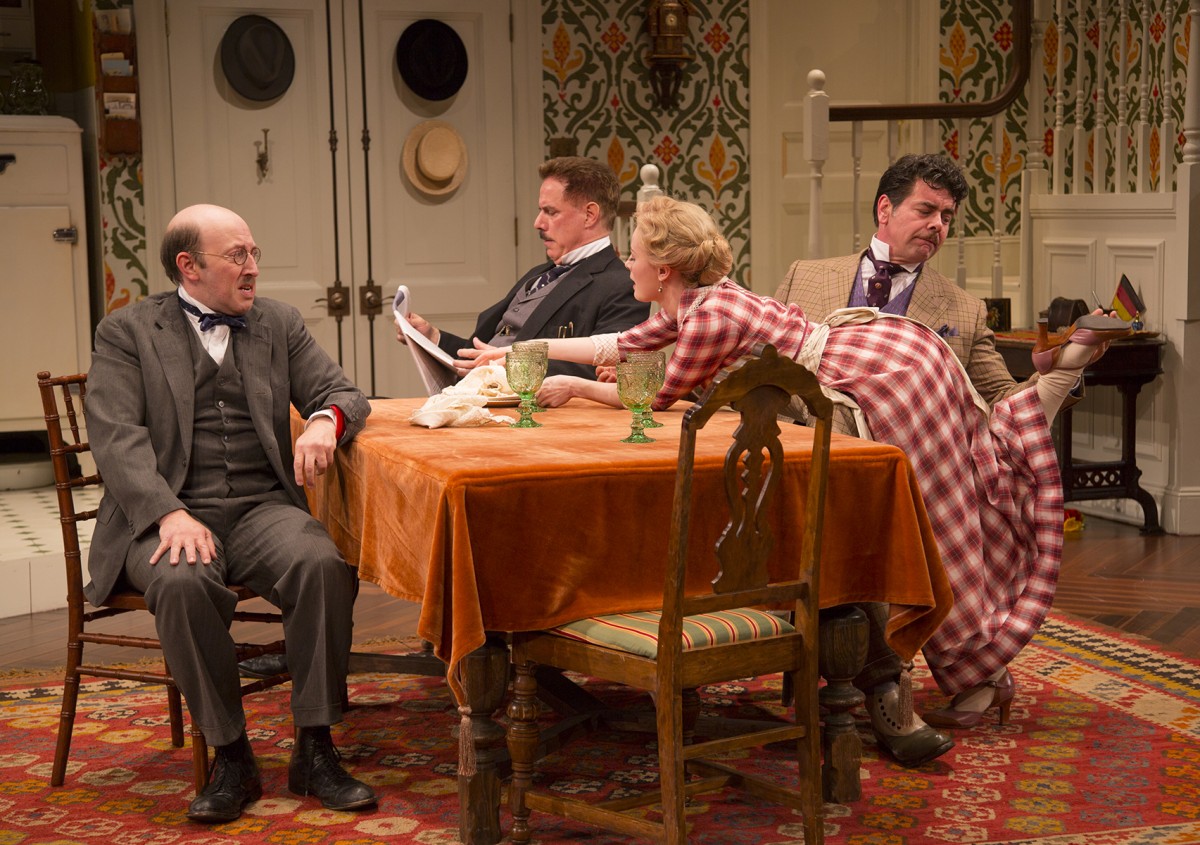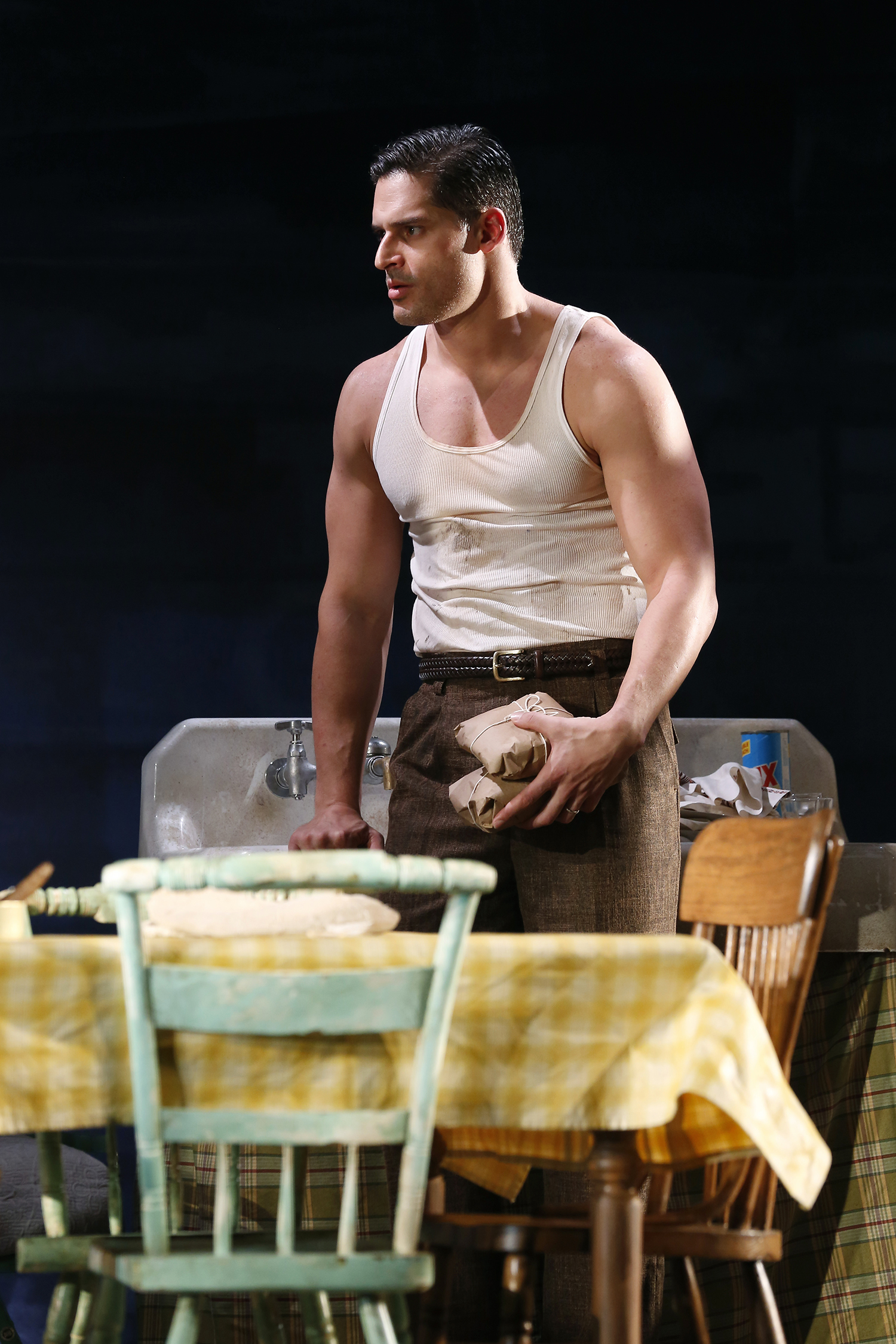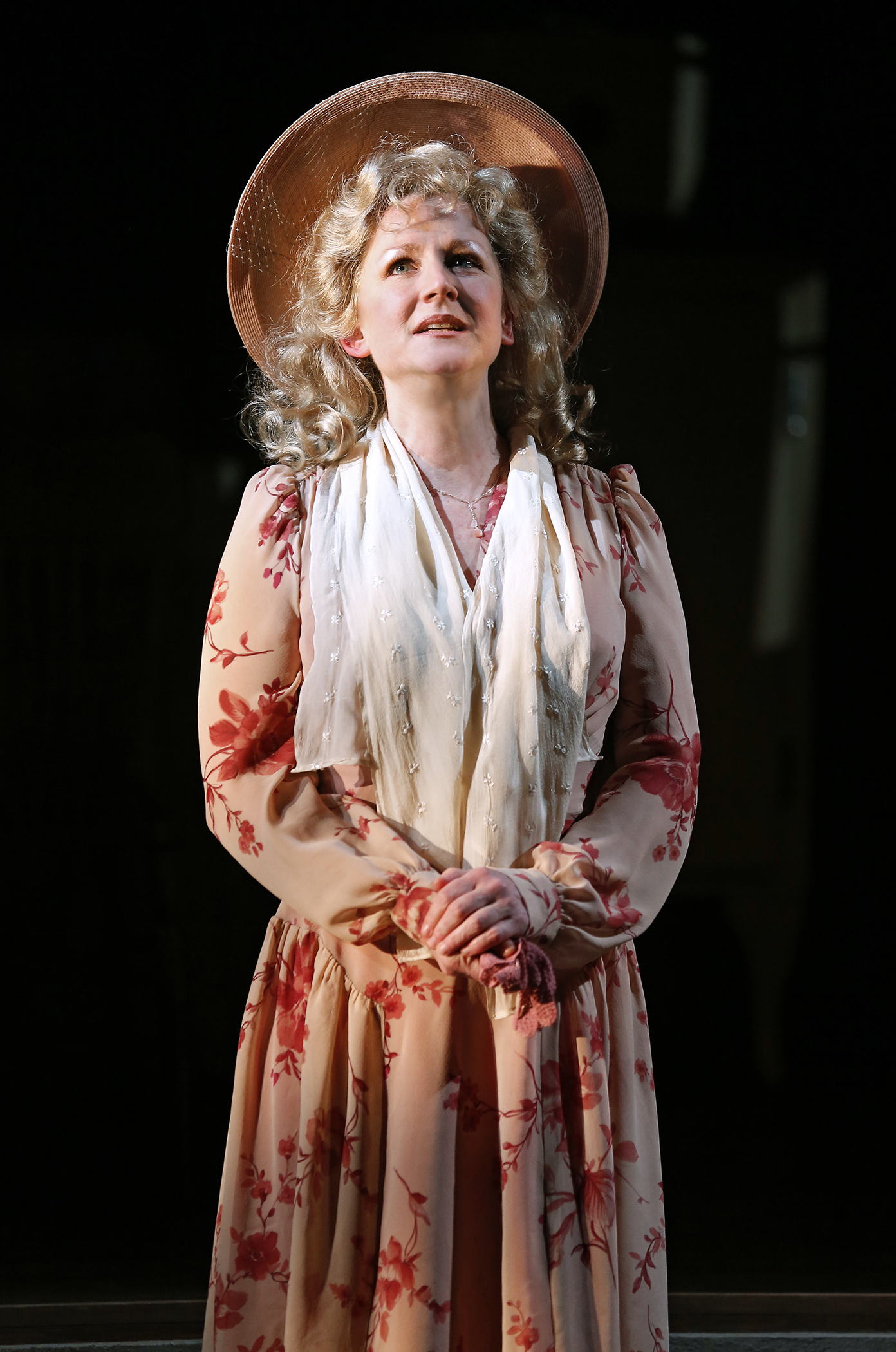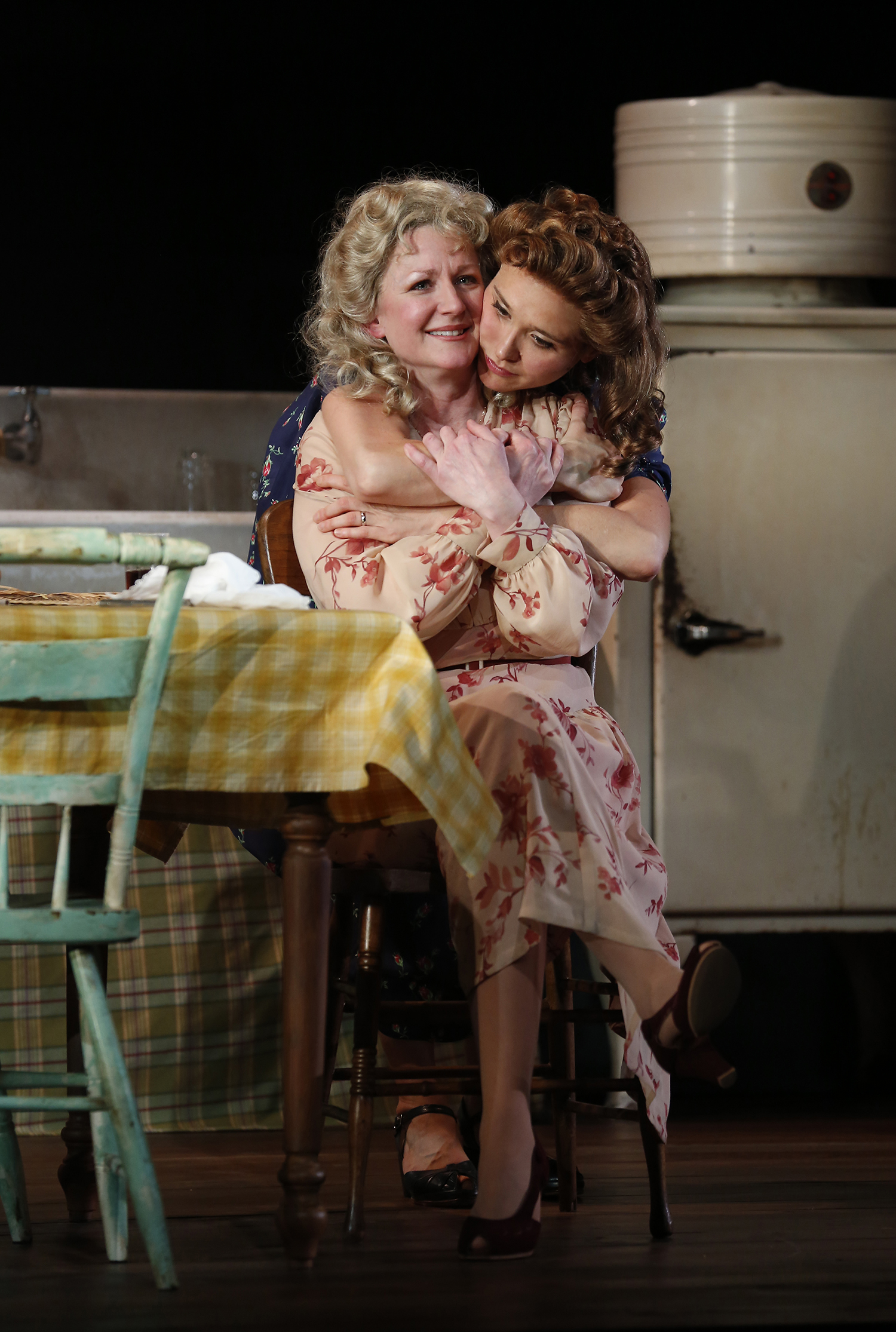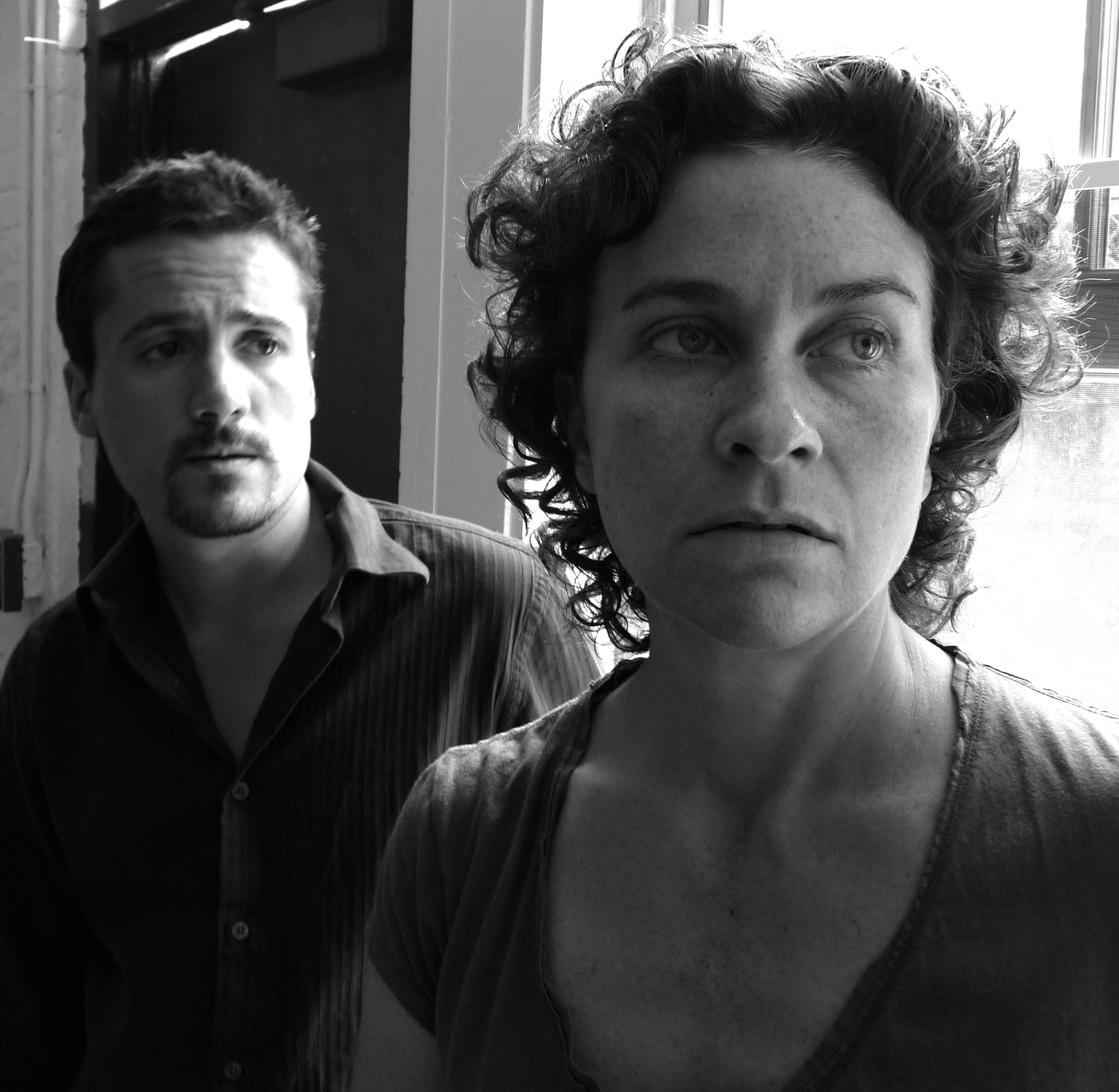Raymond Carver’s short story “Beginners” became his published short story “What We Talk About When We Talk About Love,” and therein lies a tale. The published title and story became “Carveresque” in the minds of his admirers, but it turned out that the title, and many other elements in the story, were due to the editorial efforts of Gordon Lish, a writer and editor who nurtured Carver as his mentor and publisher. Was Carver more “Carver” after Lish’s intervention or before? Whose story is it, anyway? This literary question seems to be the matter being dramatized in Phillip Howze’s Beginners by Raymond Carver; or, What We Talk About When We Talk About Love at Yale Cabaret, but, as might be expected, that story-behind-the-story is not so easy to dramatize.
Sitting before the audience are four people around a table, just like in both versions of Carver’s story: Mel/Herb (Aaron Bartz) and Terri (Prema Cruz) are a couple, as are Nick (David E. Bruin) and Laura (Ashley Chang). In the story these four get onto the subject of “love.” In Carver’s “Beginners,” Herb holds forth about his views more than the others, mostly in an effort to offset Terri’s claim that the abusive man, Carl, with whom she had lived before Herb and who eventually took his own life, loved her. “If that’s love, you can have it,” Herb says, more than once. In “What We Talk…” Herb is called Mel, and he says most of the same things. (You can know this by looking up the changed text—The New Yorker printed the original with Lish’s emendations some time after Carver’s death.)
On stage, we get a brief gesture to the name change and maybe the sense that we’re going to be watching an enactment that registers the alterations, so that “the story” will morph according to which version we’re getting. The problem with that approach is the changes are often too subtle to enact. So, Howze and director Andras Viski append to the story happening in front of us voice-overs from Carver’s letters to Lish, read by Yahya Abdul-Mateen II, to give a sense of how the story got away from Carver. And yet nothing he says comments on any specific changes. We can only infer what Carver objects to, as he goes from gratefully “taking the changes” to questioning what Lish has done to his story.
As someone who both edits the writing of others and writes, I found this aspect of the play to be the most interesting. I could feel for Carver, and Abdul-Mateen reads the prose in a clear and forceful voice that lets us hear how carefully—and even desperately—Carver was choosing his words, trying to call off the editorial license he had called down upon his tale. But what about the story in front of us and the interplay?
The things Lish struck out of the story float at times behind the players as ghostly text, then as struck-through text. No one reads this text aloud—I suppose because it has been silenced by Lish—so if you read quickly you know what’s happening in “Beginners”; if you don’t you only get “What We Talk About When We Talk About Love.”
The disparity is very important at the story’s close when Mel/Herb, now pretty drunk, starts to flounder around about calling his kids—from whom he is separated by his divorce from his first wife—and then goes off to take a shower before, ostensibly, the two couples go out to eat. In Carver’s original version, there is much more speech from Terri; in the Carver/Lish version, not. Both include the speech by Nick, looking out the window and away from the women—Laura comforting Terri, who is upset—, with which Howze’s play ends. It’s hard to say, at that point, what version of the story we’re getting. Neither Carver’s nor Carver/Lish’s because, most obviously, neither were written as a stage play.
So, what about Howze’s version? The best thing about the play version is Aaron Bartz’s reading of Mel/Herb. While he doesn’t “look” like I imagine a Carver character looking, he is closer to that image than the others and capably delivers the long speeches—particularly the story-within-the-story about the old couple hospitalized after an accident—that describe Mel/Herb’s view of what married love should be. The fact that neither of the couples is enjoying that kind of married love is clear, but, at the same time, we do experience the hopefulness of Laura—Ashley Chang makes the most of the reactions her character is there for—and the neutrality of Nick.
In the story, though, Nick is our narrator, so his neutrality is partly offset by the fact that we get everything through his perspective. Howze doesn’t let us in on that until Nick delivers the final statement of the play, and that has the effect of making his words sort of hang there, even more than they do in the short story.
As Terri, Prema Cruz’s role is crucial because, as the night goes on, we come to realize that much of Mel’s fulmination is directed at her previous love. Mel can forthrightly state that he now hates his former wife, while allowing he must’ve loved her at one time, but Terri’s silence on that point tells us that she won’t say she hates the at-times violent man she previously married. She still feels his love was love because she still loves him (she sat at his side until his death, three days after the self-inflicted gunshot that killed him), and that love makes her current husband increasingly surly. All this is dramatized quite well in Viski’s production, though Cruz seems too detached to be the kind of "open heart" I imagine Carver imagined Terri to be.
What is much more murky is what any of that has to do with the drama between Lish and Carver, and if we’re to read the lines that pass by us too quickly—as the figures at the table turn away from us to read the wall with us—as part of the play or not.
Howze and Viski’s version of the content of “Beginners/What We Talk About…” works because Carver’s story has enough verbal interaction to be stageable. The four-way conversation is interesting and Bartz engaging enough to carry the evening. But what doesn’t get across is the “Carver” element of story-telling: that rather laconic and undemonstrative narrative voice that floats ghostly behind-the-scenes, here, but which is the whole point, in narrative fiction. Instead, we get the drama of those letters, whose reality almost overwhelms the playlet before us. Which may be the point. Or not.
Beginners by Raymond Carver; or, What We Talk About When We Talk About Love Adapted by Phillip Howze Directed by Andras Viski
Dramaturg: Rachel Carpman; Producers: Emika Abe, Libby Peterson; Set Designer: Jean Kim; Costume Designer: Sara Holdren; Lighting Designer: Joey Moro; Sound Designer: Joel Abbott; Projections Consultant: Shawn Boyle; Projections Engineer: Joey Moro; Stage Manager: Kate Pincus; Technical Director: Ted Griffith; Photography: Nick Thigpen
Yale Cabaret October 17-19, 2013



